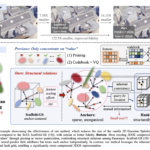
- Satoshi Nakamoto praised Ripple’s unique trust distribution model, differentiating it from centralized systems and complementing Bitcoin’s vision.
- Ripple’s validator-based consensus mechanism and focus on cross-border payments solidify its role as a transformative force in decentralized finance.
In a 2009 email exchange between Bitcoin’s creator, Satoshi Nakamoto, and early Bitcoin developer Martti ‘Sirius’ Malmi, Nakamoto acknowledged Ripple’s innovative approach to decentralized trust systems.
In addition, Malmi introduced Ripple as a groundbreaking project, to which Nakamoto responded, “As trust systems go, Ripple is unique in spreading trust around rather than concentrating it.”
Ripple’s Consensus Mechanism
According to Coin Market Cap (CNF), Ripple’s CTO, David Schwartz, has cast doubt on Craig Wright’s claim of being Satoshi Nakamoto, citing a lack of compelling evidence. This skepticism has reignited debate within the crypto community, with some speculating that Satoshi Nakamoto might be a group rather than an individual, given Bitcoin’s technical complexity and wide-reaching impact.
Ripple employs a consensus mechanism that differs from Bitcoin’s proof-of-work model by relying on validators to confirm transactions. This design eliminates the need for a central authority, aligning with Nakamoto’s vision of decentralized networks while enhancing efficiency and security.
Furthermore, Amelie highlighted in a tweet that:
Satoshi Nakamoto, founder of Bitcoin in 2009, stated:
“Ripple is the only system that does something with trust besides concentrating it into a central server.”
Ripple’s unique focus on cross-border payments and institutional partnerships sets XRP apart in the cryptocurrency landscape. The network’s commitment to global regulatory compliance and its energy-efficient model have further strengthened its position.
Nakamoto’s early recognition of Ripple’s decentralized trust model highlights its complementary role to Bitcoin, offering innovative solutions in the digital asset space.
Community Insights and Lessons Learned
The resurfacing of Nakamoto’s comments has spurred fresh discussions within the XRP community. Supporters view this acknowledgment as a validation of Ripple’s foundational principles and its contribution to advancing decentralized finance. Ripple’s emphasis on distributing trust aligns with broader industry efforts to reduce reliance on centralized systems, bolstering its relevance in the evolving crypto ecosystem.
Satoshi Nakamoto’s acknowledgment of Ripple’s decentralized trust model in 2009 underscores the project’s groundbreaking contributions to the cryptocurrency sector. By creating a system that distributes trust across validators, Ripple provides a unique alternative to Bitcoin’s framework, cementing its importance as a transformative force in the decentralized financial landscape.
Subsequent to the Ripple (XRP) price, according to Coin Market Cap data, it is currently trading at $2.95, with a decrease of 5.78% in the past day and 5.24% in the past week. See chart below.






